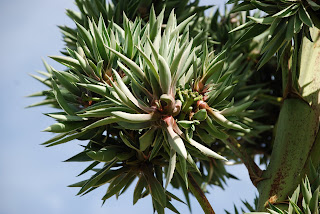 |
| How to grow Agave from seed |
Plants from the Agave family hold some of the most impressive succulents on the planet, and luckily for us, most agaves are relatively easy to grow.
Because agaves are relatively slow growing they can be expensive to purchase, so propagating your own agaves is a fantastic way of building up your stocks as well as getting the varieties that you want.
 |
| How to grow Agave from seed |
Another, but rather more drastic way of getting agaves to reproduce, is to remove the center of the adult plants. Just as with cacti, this stimulates the plant to produce multiple heads, each of which can then be rooted.
Unfortunately, all of these methods of reproduction have disadvantages. For example, not all plants produce clones - some of the most beautiful such as A. Victoria-reginae and A. ocahui rarely ever do, and even for those that will, the offsets may be poorly shaped or attached too tightly to allow separation from the parent without injury. Furthermore, the offset may contain diseases passed on from the parent. Reproduction by means of bulbils gives you many plants in a hurry, but this tends to be a rare event and characteristic of just certain species.
 |
| Agave bulbils |
The compost mix for agave seedlings is very simple, mix equal parts of sifted sterilized topsoil and crushed granite/horticultural grit. Using a seed tray or individual pots, fill with the compost mix then sow the seeds giving each seed a couple of inches spacing. Lightly cover the seeds with some more of the compost then, give them another light covering grit.
Water the tray or pots by setting them in a pan of water until the wet surface indicates that the soil has become thoroughly saturated. After the tray/pot is removed, allow it to drain for several minutes, then cover the pot with transparent cover such as a sheet of glass, propagator lid or even plastic wrap!
Place the tray/pot on a warm windowsill, but out of direct sunlight.
 |
| Agave seedling |
Seedlings will vary considerably in size during their first weeks of life which usually reflects the size of the seeds that produced them. Agave seedlings have a tendency to fall over. If this occurs, add some coarse sand to the tray/pot to help shore them up.
After two to four weeks of development, a slit develops near the base of the first leaf and out of it come the second leaf, this one looking much more like an agave than the first, but still elongated and devoid of marginal spines. The third leaf,when it appears, tends to be wider than the second is, and it does contain small marginal spines. By the time the third leaf has made its appearance, the initial leaf has begun to turn yellow and dries out from the tip. It has done its job and it proceeds to disappear. Try to keep the soil moist, but even at this early stage, seedlings can dry out completely for several days with no apparent damage.
The seedlings will let you know if they are receiving too much light or too little. In the first case, they take on a purplish tinge. In the second, they turn pale. Try not to change their light regimen abruptly, it is far better to do it in gentle stages.
By the time the third leaf arrives, the plants begin to bear some resemblance to their
parents.
For related articles click onto the following links:
AGAVE
Grow Agave Seed
HARDY CACTI AND SUCCULENTS FOR GROWING OUTSIDE
HOW TO GROW AGAVE
HOW TO GROW AGAVE FROM SEED
HOW TO GROW PEYOTE FROM SEEDS
IS AGAVE NECTAR BAD FOR YOU?
THE BLUE AGAVE







No comments:
Post a Comment